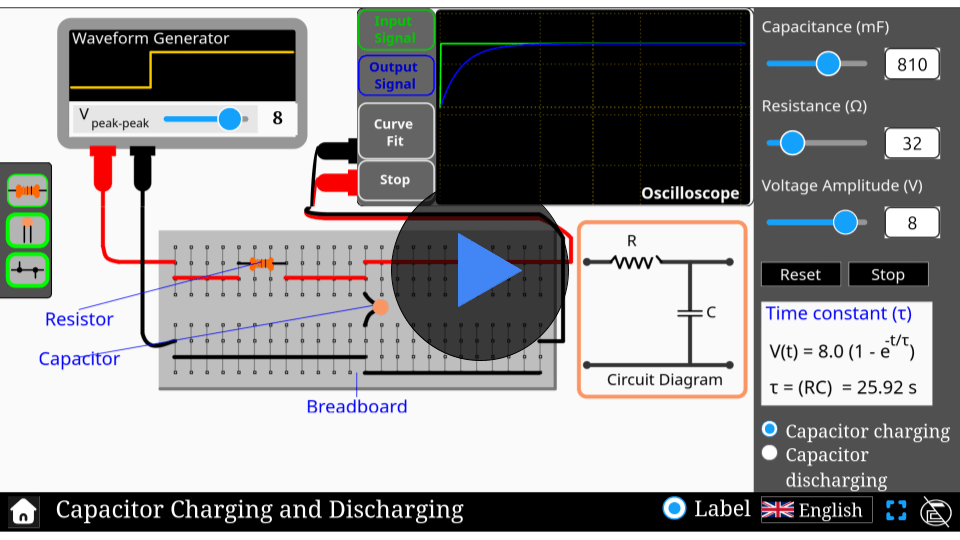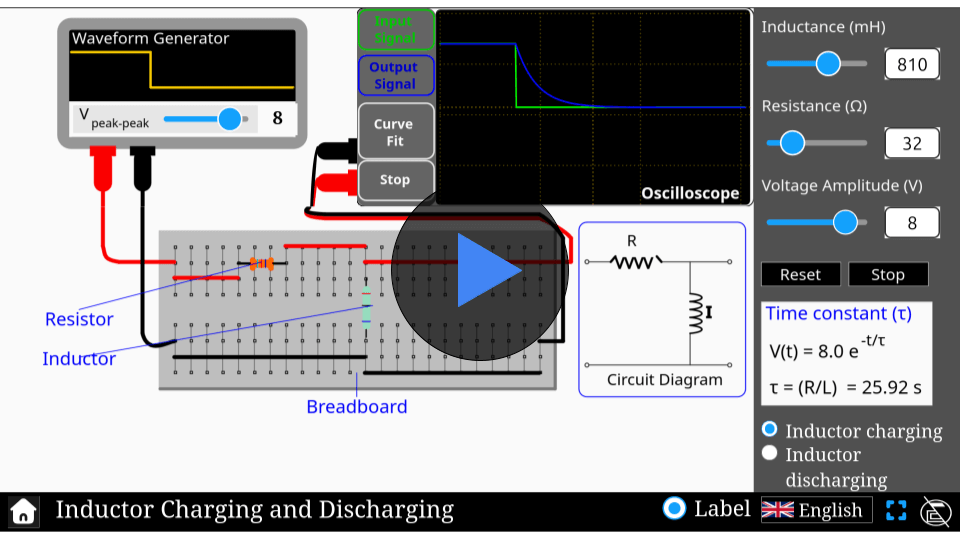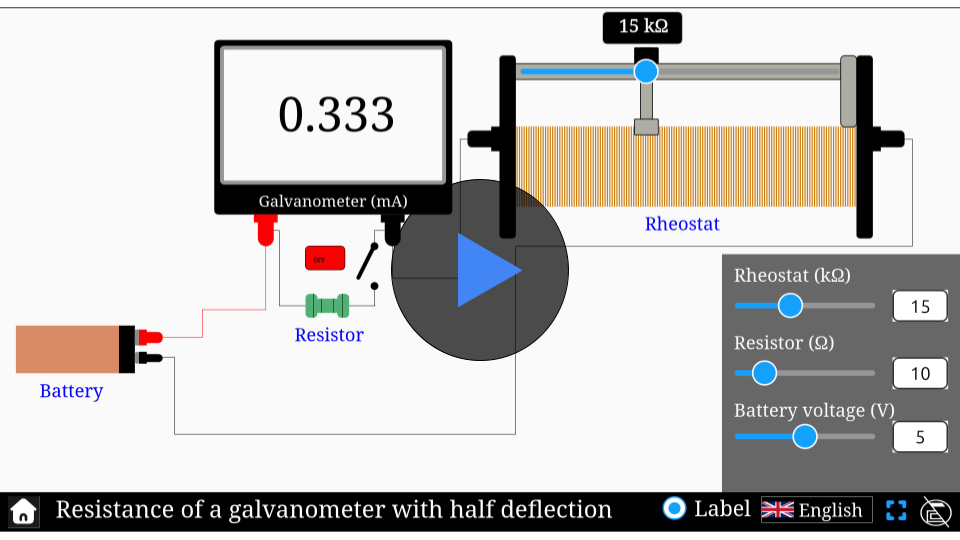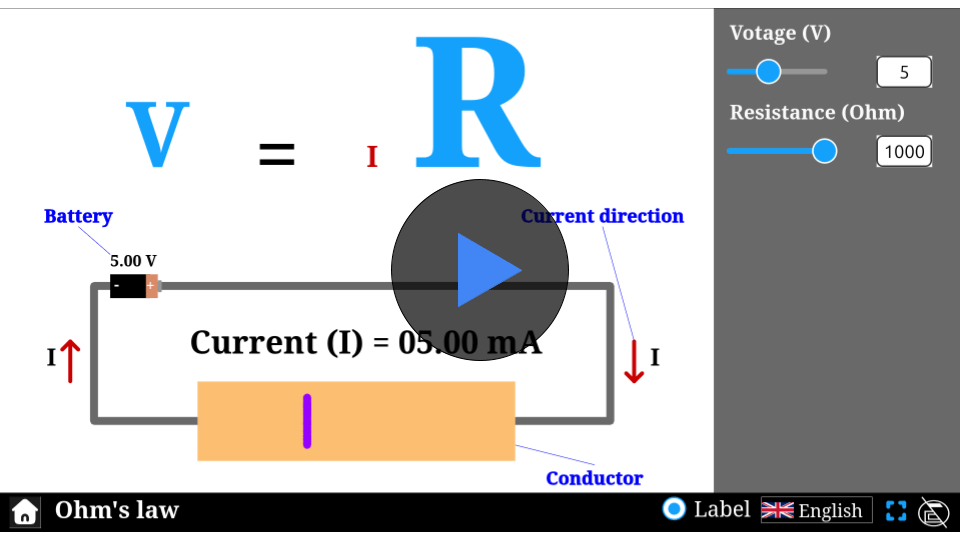Internal resistance of a battery simulator
Understand the internal resistance of a battery: explore how it affects voltage and current flow with our interactive simulator.
Internal resistance of a battery
Batteries are at the heart of modern technology, powering everything from smartphones to electric vehicles. But what role does internal resistance play in their efficiency? Discover the science behind it with our interactive simulator. Adjust the parameters, explore voltage drops, and see how internal resistance impacts performance. Dive into the fundamentals of battery behavior — start experimenting today!
\[ r = \left(\frac{E}{V} – 1\right)R
\]
Mathematical description
where:
- \( E \) is the EMF of the battery- maximum potential difference between the terminals of the battery when no current is flowing difference b
- \( V \) is the terminal voltage of the battery- The potential difference between the battery terminals when the battery is connected to a circuit and current is flowing.
- \( R \) is the external resistance connected to the battery
- \( r \) is the internal resistance of the battery
FAQs on Internal resistance of a battery simulator
Qus 1. What is internal resistance of a battery?
Internal resistance is the opposition offered by the battery itself to the flow of current, caused by the material inside the cell.
Qus 2. What is the aim of the internal resistance experiment?
The aim is to determine the internal resistance (r) of a cell using a potentiometer, by comparing the EMF and terminal voltage.
Qus 3. What is the difference between EMF and terminal voltage of a battery?
EMF or Electromotive force is the maximum potential difference between the terminals of a battery when no current is flowing (open circuit).
Terminal voltage is the potential difference between the battery terminals when the battery is connected to a circuit and current is flowing.
Qus 4. What is the formula used to calculate internal resistance?
Internal resistance is given by:
\[ r = \left(\frac{E}{V} – 1\right)R
\] where E is EMF, V is terminal voltage, and R is external resistance.
Qus 5. How is a potentiometer used in this experiment?
A potentiometer is used to find two balancing lengths: one with no current (EMF), and one with current (terminal voltage). The difference helps calculate internal resistance.
Qus 6. Why is the potentiometer preferred for this experiment?
Because it allows accurate measurement without drawing current while finding EMF, eliminating errors caused by internal resistance.
Qus 7. What does a higher internal resistance indicate?
Higher internal resistance means the battery loses more energy as heat, reducing efficiency and output voltage under load.





Reading this was like listening to a song that fills you with both peace and a desire for deeper understanding.